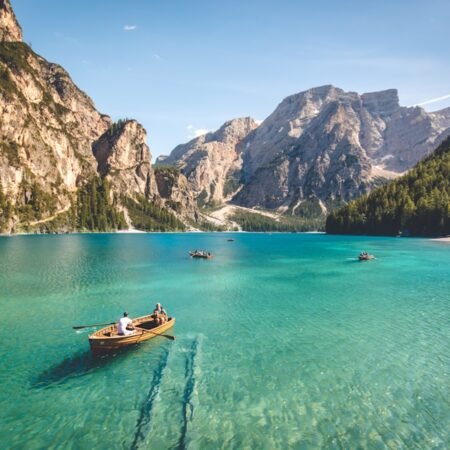When engaging in swimming activities in lakes and rivers, it is crucial to acknowledge the potential hazards and risks associated with these natural bodies of water. Unlike controlled swimming pools, lakes and rivers are characterized by unpredictable currents, submerged obstacles, and varying depths, which can pose significant threats to swimmers. One of the most prevalent dangers in lakes and rivers is the presence of strong currents, which can rapidly sweep swimmers away from the shore and make it challenging to return to safety.
Furthermore, submerged hazards such as rocks, logs, and debris can be hidden from view and cause injuries to unsuspecting swimmers. It is also essential to be aware of the varying depths of lakes and rivers, as sudden drop-offs can catch swimmers off guard and lead to accidents. By recognizing these common hazards, swimmers can better prepare themselves for a safe and enjoyable experience on the water.
Another significant risk to be aware of when swimming in lakes and rivers is the potential for waterborne illnesses. Unlike treated swimming pools, natural bodies of water can harbor bacteria, parasites, and other pathogens that can cause illness if ingested or come into contact with open wounds. Swimmers should exercise caution when swimming in areas with high levels of pollution or agricultural runoff, as these can increase the risk of waterborne illnesses.
Additionally, it is essential to be mindful of any open cuts or wounds while swimming in lakes and rivers, as these can become infected if exposed to contaminated water. By understanding the risks associated with swimming in natural bodies of water, swimmers can take the necessary precautions to stay safe and healthy during their aquatic activities.
Key Takeaways
- Always swim with a buddy and never alone
- Be aware of the common dangers in lakes and rivers, such as strong currents and underwater obstacles
- Pack essential safety gear like life jackets, first aid kit, and a whistle
- Understand water safety basics, including swimming in designated areas and avoiding alcohol while swimming
- Stay updated on changing weather conditions and know when to get out of the water for safety
Essential Safety Gear: What to Pack for a Safe Day on the Water
Life Jacket: A Must-Have Safety Item
One of the most critical pieces of safety gear to bring along is a properly fitting life jacket. Even strong swimmers can benefit from wearing a life jacket, especially in areas with strong currents or unpredictable water conditions.
First Aid Kit and Emergency Signaling
It’s also important to pack a first aid kit that includes supplies for treating minor injuries such as cuts, scrapes, and insect bites. Additionally, swimmers should consider bringing along a whistle or other signaling device that can be used to attract attention in case of an emergency.
Sun Protection and Staying Hydrated
Another essential piece of safety gear for swimming in lakes and rivers is sun protection. Sunscreen, sunglasses, and a wide-brimmed hat can help protect swimmers from the harmful effects of UV rays while enjoying the water. It’s also important to stay hydrated while swimming, so be sure to pack plenty of water and snacks to keep energy levels up throughout the day.
Staying Connected in Case of Emergencies
Finally, swimmers should consider bringing along a waterproof phone case or other means of communication in case of emergencies. By packing these essential safety gear items, swimmers can be better prepared for a safe and enjoyable day on the water.
Water Safety Basics: Tips for Safe Swimming and Water Activities
In addition to packing essential safety gear, there are several water safety basics that swimmers should keep in mind when swimming in lakes and rivers. One of the most important tips for safe swimming is to always swim in designated areas that are supervised by lifeguards or other trained personnel. These areas are typically marked with buoys or signs and are regularly monitored for potential hazards.
Swimmers should also be mindful of their surroundings and avoid swimming near boat ramps, docks, or other areas with heavy boat traffic. Another important water safety basic is to never swim alone. Always swim with a buddy or in a group, and be sure to keep an eye on each other while in the water.
This is especially important in areas with strong currents or changing water conditions, as having a buddy nearby can provide assistance in case of an emergency. Swimmers should also be mindful of their own abilities and avoid taking unnecessary risks while swimming in lakes and rivers. By following these water safety basics, swimmers can reduce their risk of accidents and injuries while enjoying their time in the water.
Weather Watch: How to Stay Safe in Changing Conditions
| Swimming Safety Tips | Description |
|---|---|
| 1. Swim in Designated Areas | Always swim in areas supervised by lifeguards and designated for swimming. |
| 2. Check Water Conditions | Be aware of water conditions such as currents, tides, and underwater hazards. |
| 3. Swim with a Buddy | Always swim with a buddy and keep an eye on each other. |
| 4. Learn to Float and Tread Water | Knowing how to float and tread water can help in case of fatigue or cramps. |
| 5. Wear a Life Jacket | Wearing a life jacket is essential, especially for non-swimmers and children. |
| 6. Stay Hydrated | Drink plenty of water to stay hydrated, especially in hot weather. |
| 7. Follow Rules and Signs | Obey all posted signs and rules at the swimming area. |
Weather conditions can change rapidly when swimming in lakes and rivers, so it’s important to stay informed and prepared for any potential changes. Before heading out for a day on the water, swimmers should check the local weather forecast and be aware of any potential storms or severe weather that may be approaching. If thunderstorms are in the forecast, it’s best to postpone any water activities until the weather has cleared up.
Additionally, swimmers should be mindful of changing wind conditions, as strong winds can create choppy water and make swimming more difficult. It’s also important to be aware of potential changes in water levels when swimming in lakes and rivers. Heavy rainfall upstream can cause water levels to rise quickly, leading to strong currents and hazardous conditions for swimmers.
Swimmers should be cautious of any sudden changes in water levels and be prepared to move to higher ground if necessary. By staying informed about changing weather conditions and water levels, swimmers can better prepare themselves for a safe day on the water.
Supervision and Buddy System: The Importance of Watching Out for Each Other
When swimming in lakes and rivers, it’s important to have proper supervision and utilize the buddy system to ensure the safety of all swimmers. Children should always be supervised by a responsible adult while swimming, and inexperienced swimmers should stay within arm’s reach of an adult at all times. It’s also important for adults to watch out for each other while swimming, especially in areas with strong currents or changing water conditions.
The buddy system is another important aspect of staying safe while swimming in lakes and rivers. Swimmers should always have a buddy nearby who can provide assistance in case of an emergency. It’s also important to communicate with your buddy about your swimming abilities and any potential risks or concerns before entering the water.
By utilizing proper supervision and the buddy system, swimmers can reduce their risk of accidents and injuries while enjoying their time in the water.
Emergency Preparedness: What to Do in Case of Accidents or Incidents
Responding to Emergencies
If someone is in distress in the water, it’s crucial to call for help immediately by alerting a lifeguard or other trained personnel. Swimmers should also be familiar with basic water rescue techniques such as reaching or throwing assists, but should avoid entering the water themselves unless they are trained in rescue procedures.
Basic First Aid and Emergency Response
In the event of an injury or medical emergency, swimmers should have access to a first aid kit and know how to administer basic first aid until professional help arrives. It’s also important to have a plan for getting help quickly, whether it’s by calling 911 or using a signaling device to attract attention.
Minimizing Risks
By being prepared for emergencies and knowing how to respond in case of accidents or incidents, swimmers can minimize the potential risks associated with swimming in lakes and rivers.
Responsible Recreation: How to Have Fun While Respecting the Environment and Other Water Users
While enjoying their time in lakes and rivers, swimmers should also be mindful of their impact on the environment and other water users. It’s important to respect wildlife and natural habitats by avoiding disturbing plants or animals while swimming. Swimmers should also be mindful of any rules or regulations that may be in place for specific areas, such as no-wake zones or restricted access areas.
Respecting other water users is another important aspect of responsible recreation while swimming in lakes and rivers. Swimmers should be mindful of boaters, kayakers, and other recreational users who may be sharing the same body of water. It’s important to be courteous and share the waterways with others, especially in areas with heavy boat traffic or limited space.
By practicing responsible recreation and respecting the environment and other water users, swimmers can help ensure a safe and enjoyable experience for everyone involved. In conclusion, swimming in lakes and rivers can be a fun and rewarding experience, but it’s important to prioritize safety at all times. By understanding the common dangers associated with natural bodies of water, packing essential safety gear, following water safety basics, staying informed about changing weather conditions, utilizing proper supervision and the buddy system, being prepared for emergencies, and practicing responsible recreation, swimmers can reduce their risk of accidents and injuries while enjoying their time in the water.
With these essential swimming safety tips in mind, swimmers can stay safe and have fun during their lake and river activities.
FAQs
What are some essential swimming safety tips for lake and river activities?
– Always swim in designated swimming areas. – Never swim alone; always swim with a buddy. – Be aware of the water conditions, such as currents and tides. – Wear a life jacket if you are not a strong swimmer. – Avoid alcohol and drugs before swimming.
What should I do if I get caught in a strong current while swimming in a lake or river?
– Stay calm and try to float on your back. – Signal for help and try to swim parallel to the shore to escape the current. – If you can’t escape the current, conserve your energy and float with the current until it weakens.
How can I prevent drowning while swimming in a lake or river?
– Learn how to swim and improve your swimming skills. – Always supervise children around water. – Avoid diving into unknown water and always check the depth before diving. – Be cautious of underwater hazards such as rocks and debris.
What are some additional safety tips for enjoying lake and river activities?
– Stay hydrated and protect yourself from the sun by wearing sunscreen and a hat. – Be mindful of wildlife and insects that may be present in the water and surrounding areas. – Follow any posted rules and regulations for the area you are swimming in. – Always have a first aid kit and emergency contacts on hand.













